The dress shirt is the platform on which the rest of your outfit is built. It needs to fit perfectly, or it will throw off everything else. A bad fit can make a $200 shirt look like a $20 one. But, even worse, it can make a $2000 suit look like a $20 one!
Unless you’re a Rockefeller, chances are you didn’t grow up having a personal tailor fit you for your clothing. As boys’ bodies don’t differ hugely, we weren’t taught the importance of selecting clothing to suit our body shape.
The truth is that as adult men, none of us are likely to be a “perfect” off-the-rack medium or large fit. Not to mention that these vary significantly between different labels.
Knowing how a shirt should look and feel if it fits correctly is the first step to choosing clothing that makes you look good. Let’s take it step-by-step and answer the question of how should a dress shirt fit.
Dress Shirt Vs. Shirt

A dress shirt is a longer type of shirt that’s designed to be tucked into your pants. The extra length is also to allow for extra mobility. Dress shirts also feature buttons and a collar.
On the other hand, regular t-shirts are made with a different type of fabric and don’t have protruding collars. Other shirts are also shorter as they’ve got no intention of being tucked in. Shirts like tee shirts, henley shirts, polo shirts, button-ups, etc., are not considered dress shirts.
Finding the Right Collar Fit
Most brands’ standard range of collar sizes will be from a slim 14” to a linebacker 18”. This measurement is from the collar buttonhole to the button when laid flat.
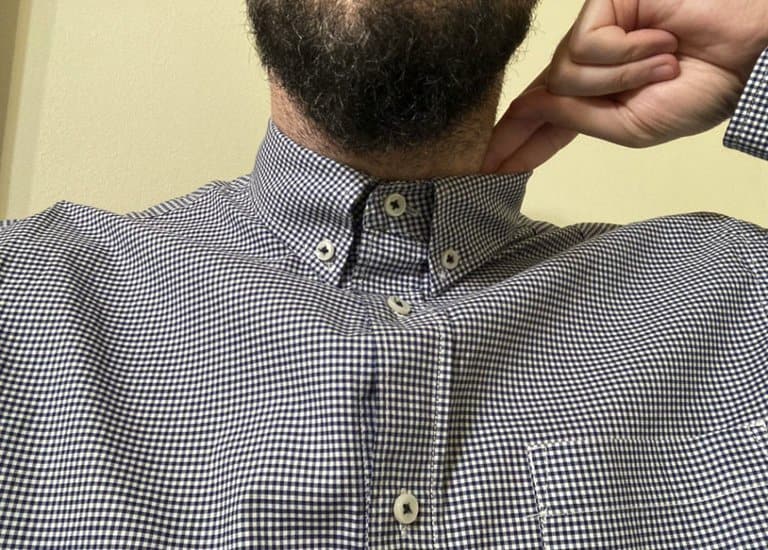
A correctly fitted collar will allow you to just fit two fingers (your index and middle fingers) between the collar and your neck once it’s buttoned. A too-tight collar will pinch your neck, and a too-loose collar won’t make contact at all.
If you don’t ever intend buttoning your collar, you can be a bit more lax on collar fit.
Finding the Right Shoulder Fit
Shirt sizing doesn’t indicate shoulder measurements. This is a good reason why you should always try on shirts before purchasing. There are two things to check for when assessing shoulder fit.
The first is where the seam rests in relation to the edge of your shoulder. It should be exactly on it. Too far in (closer to the neck), and the shoulders are too small for you. You won’t be able to move comfortably without risking splitting those seams. Too far over (down the arm), and the shoulder is too big for you. Your shirt will balloon and bunch up the minute you put your jacket on.
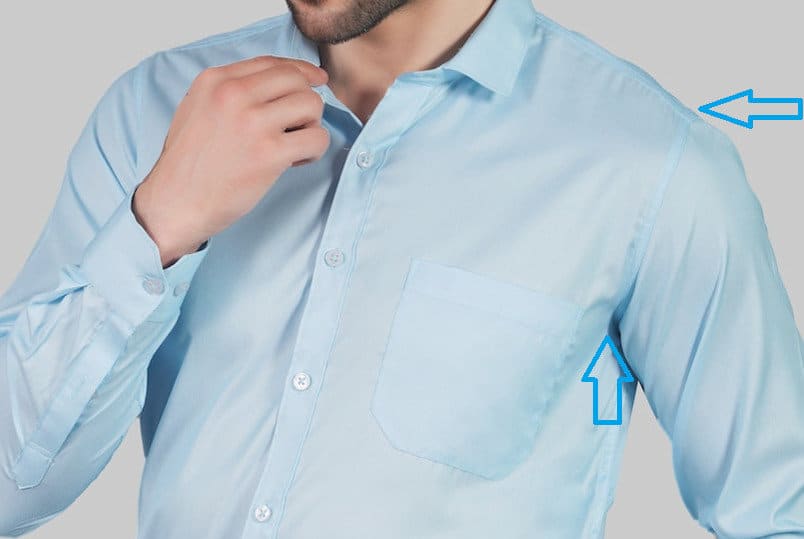
The second is the armscye – the hole where the sleeve joins the body. This should be big enough for you to move your arms freely and comfortably. There should be no pulling on the rest of the garment when you extend your arms in any direction.
But it also shouldn’t feel like there’s fabric hanging under the arm. The full test is to wrap each of your arms around the opposite shoulder. Your armhole should feel tapered under your arm but allow you a full range of motion.
Finding the Right Torso Fit
There should be no pull on the buttons of your dress shirt in both standing and sitting positions. The underside of the placket should rest lightly against your chest and stomach. Men’s dress shirts should taper at the waist to be tucked into the pants with minimal excess fabric.
Good brands will typically have two darts in the back in addition to tapered sides. These can easily be let out or taken in by a tailor to get you the perfect fit. But start out buying the closest fit you can get.
A dress shirt that’s too loose in the torso will give you a muffin-top appearance at the waist and bunch up under a suit jacket. One that’s too tight will strain at the buttons, causing crease marks in the fabric.
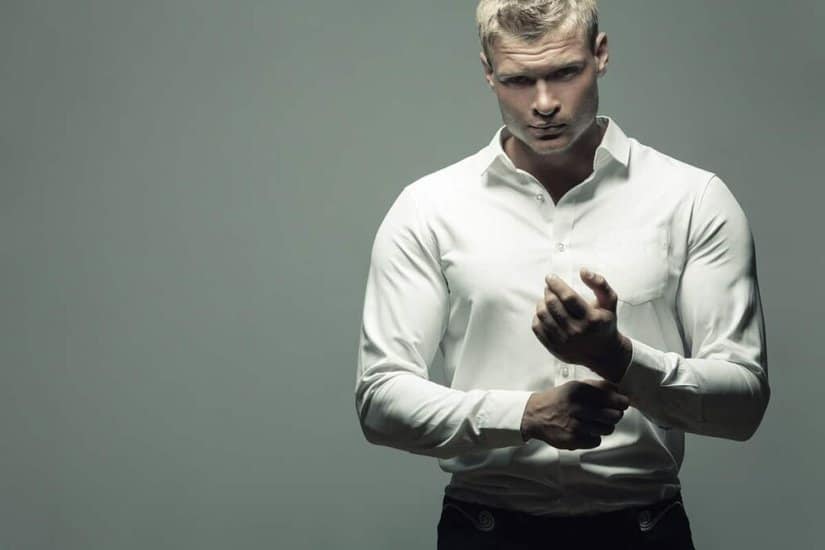
Finding the Right Sleeve Fit
When checking for sleeve fit, there are two elements to look at: sleeve width and sleeve length.
Changing fashion can dictate desired sleeve width, but even with a slim-fit dress shirt, there should be ample room in the sleeve to comfortably allow a full range of movement without putting pressure on your seams.

Regarding length, a dress shirt sleeve cuff should extend just over the start of your hand, to the major wrist bones. It should cover your watch if you wear one. Furthermore, it should be visible under the sleeve of your jacket.
Finding the Right Cuff Fit
Moving the button on a cuff is a simple exercise that can ensure the correct fit. But you don’t want it moved too much, or it will look like a women’s gathered blouse. Choose the closest fit you can and get a tailor to make the final adjustments.
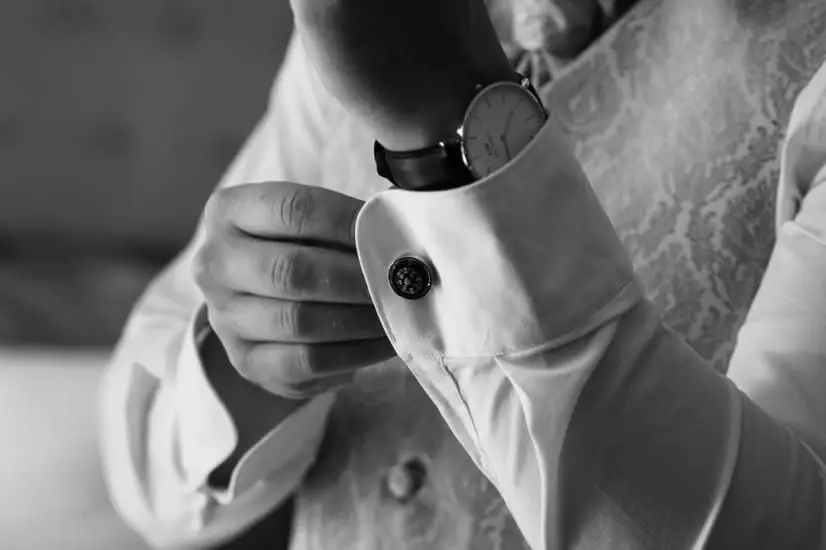
A correctly fitted cuff fits comfortably over your wrist (and watch if you wear one.) Again, you can use the two-finger test here to check the spacing between the fabric and your skin. You should also be able to pull your hand through the cuff without undoing the button – but don’t make a habit of it. There should be no creasing or crinkling of the cuff.
Finding the Right Length
Dress shirts are designed to be worn tucked in. However, guys are increasingly wearing dress shirts untucked for a more casual look.
The length of your shirt should ensure it stays tucked in, even with quite a vigorous movement like dancing. But you don’t want excess fabric to ruin the fit of your pants.
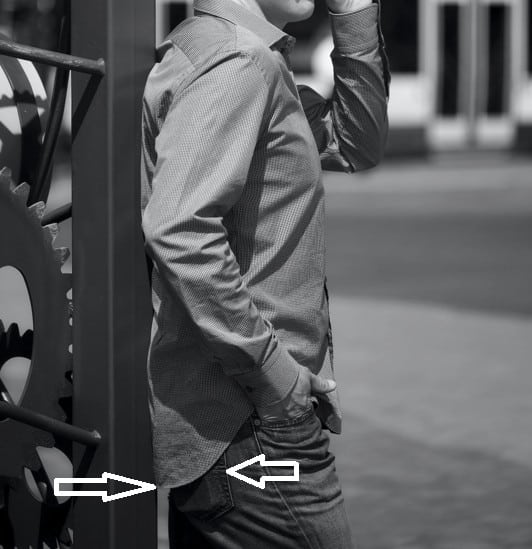
A shirttail that falls to your crotch area is definitely too long. Untucked, the tail should fall just past the back pockets of your pants. If you’re wearing your dress shirt with low-waisted jeans, aim for mid-pocket. Lifting your arms above your head, the hem should still cover the beltline.
FAQs
Here are some frequently asked questions surrounding the question of how should a dress shirt fit. Let’s take a look at some of these lingering questions:
How do you style a dress shirt?
There are so many variations of dress shirts out there that this isn’t necessarily the easiest question to answer. However, the general thought would be to get something that features a great pattern and is relatively bright. You can accessorize with neutral colors to not overwhelm anyone. For example, wearing a neutral blazer or a suit with a bright color dress shirt is perfect for creating an eye-catching.

How far down should a dress shirt go before it’s too long?
It’s a tricky question to answer, but there’s a general rule you can follow. For a dress shirt to be the optimal length, then it should not go beyond the halfway point of your butt. On the opposite end, it shouldn’t go beyond the halfway point of your fly. You don’t want the shirt to be too short either, as that can make it uncomfortable and also put you at risk of exposing skin or having it constantly untuck itself when you lift your arms.
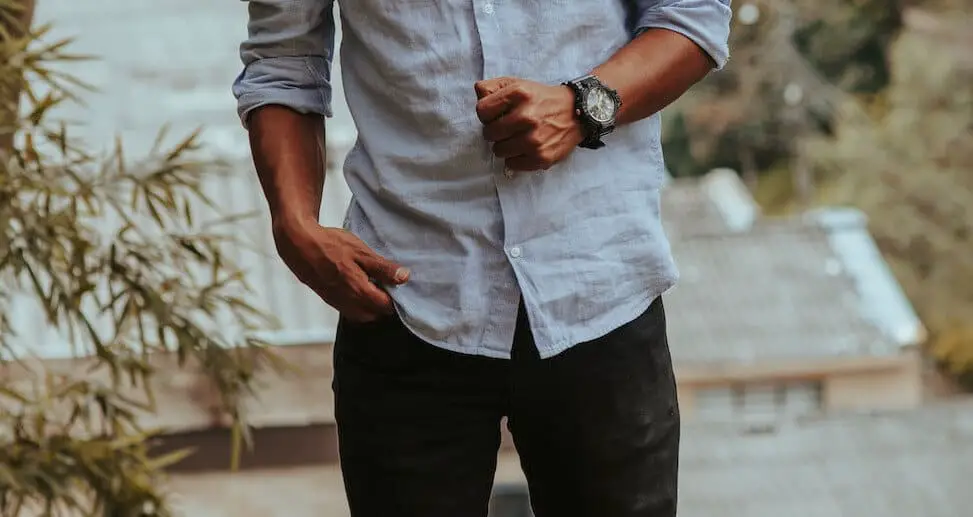
You can tell if your dress shirt is too long if you’re able to fit more than 2 fingers between your neck and collar when the shirt is fully buttoned up.
How is a dress shirt supposed to fit?
When your dress shirt fits just right, you’re going to know. The shirt should end at the shoulders. If it’s longer, it can only be a tiny bit longer otherwise. It’s not a good fit. If you’re noticing wrinkles on your shirt when it’s buttoned up, it’s too small for you. The most obvious sign that it’s not the right fit is when it looks too loose.
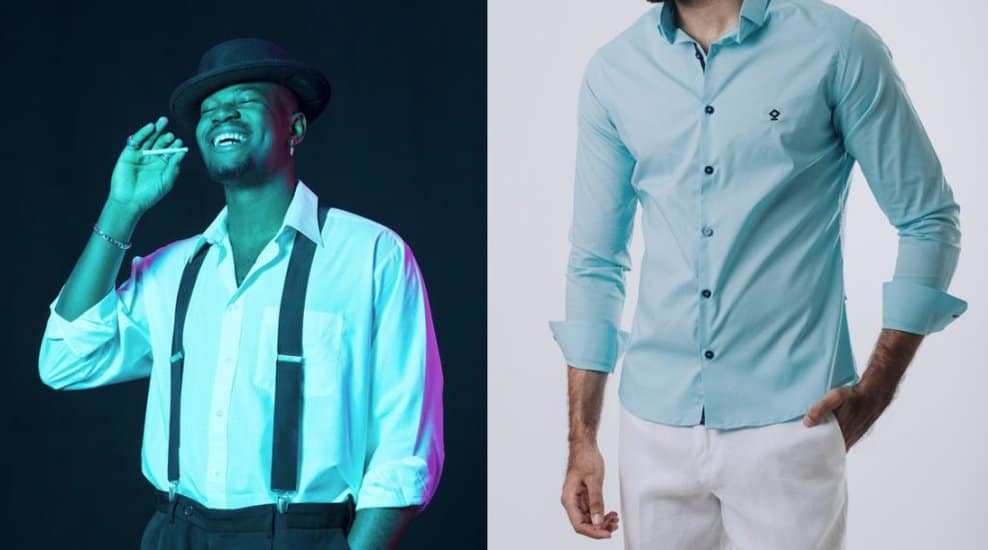
If you’ve got a button-up that’s too small, you’re able to go to a professional tailor. The pros can help get your dress shirts shorter and better fitting.
Closing Thoughts
So how should a dress shirt fit? Whatever your body shape, you can obtain the perfect fit on a dress shirt if you shop carefully and find a good tailor to make any necessary alterations. A properly fitted shirt will make your entire ensemble fit better.
Knowing you are looking your best is a great confidence booster. In this article, we’ve given you the basics to check. So make the time and effort to seek out the perfect fitting dress shirt. You can thank us later.

Samoel Ovanessian is the founder and creator of StylishAlpha.com – a website dedicated to men’s fashion. As a proud owner of more than 200 ties, he loves digging through new clothing combinations for everyday use, formal events and even just for fun. You can read more about Samoel here.

